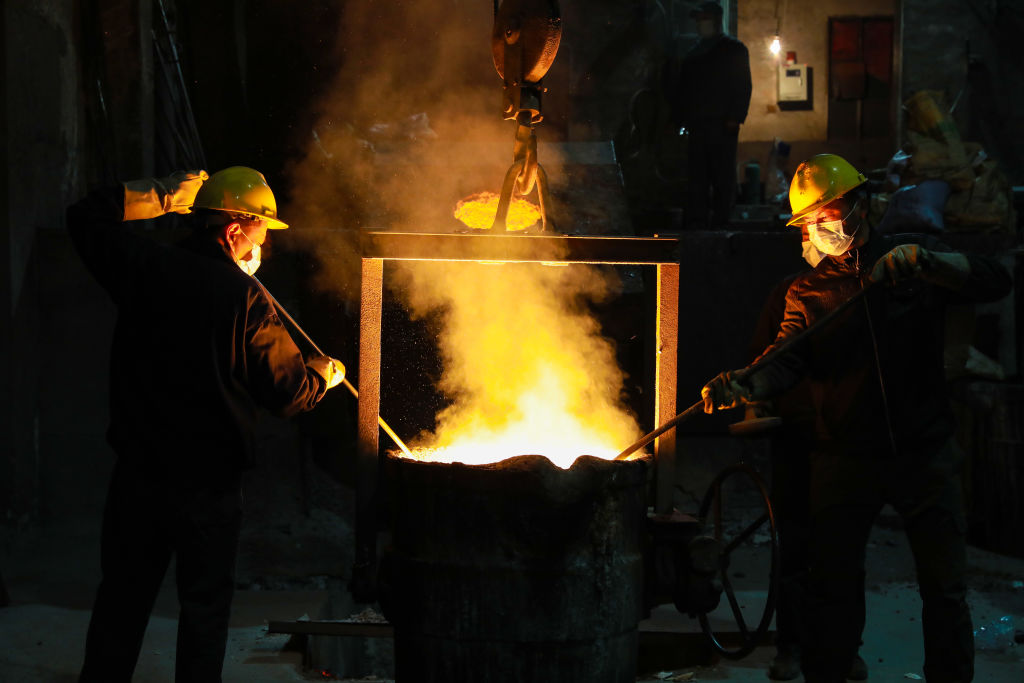
China’s steel industry is entering a precarious new era as a worsening property crisis imperils demand and Beijing’s construction-led growth model looks increasingly untenable.
Almost a third of China’s steel mills could go into bankruptcy in a squeeze that’s likely to last five years, Li Ganpo, founder and chairman of Hebei Jingye Steel Group, warned at a private company meeting in June. “The whole sector is losing money and I can’t see a turning point for now,” he said, according to a transcript of the gathering seen by Bloomberg News.
The real-estate crisis has ballooned this year, engulfing developers to banks, and forcing to Beijing to soften its growth ambitions. Steel mills that churned out more than a billion tons last year, around half of global output, are highly vulnerable to the slump that’s also hit iron ore prices and miners from Australia to Brazil.
After more than a year of property pain, the outlook is worsening as the government baulks at big bailouts and keeps stringent debt rules in place. A steel purchasing managers index for July tumbled to its lowest reading since 2008, and Goldman Sachs Group Inc. sees demand down by 5% this year. The property sector accounts for at least a third of Chinese steel demand.
Beyond the current crisis, the industry is facing profound challenges as the growth model that’s sustained China’s economy for decades shows signs of strain. President Xi Jinping looks reluctant to deploy the levels of infrastructure spending and financial stimulus that revived the sector after the great financial crisis and the property market downturn in 2015-2016.
Read More: China’s Mortgage Boycotts Are Spreading and Could Get Worse
“This time really is different,” said Leland Miller, chief executive officer of China Beige Book International, which monitors the steel industry. “With property having lost its mantle as the preeminent growth driver, key commodities like steel no longer have the benefit of endless credit access.”
In the short term, the major obstacle for steel is the large stock of unfinished properties, highlighted by a recent wave of mortgage boycotts. Prices of construction steel have also plunged, with rebar — twisted steel rods that strengthen concrete — falling to a two-year low last week. That’s even as output has dropped to the lowest in Mysteel data that goes back to 2015.
Outlook for steel in China
“Demand is slipping fast,” Xiao Zunhu, chairman of state-owned Hunan Valin Steel Co., told an industry meeting in Beijing last week where speaker after speaker warned of difficult times to come. Markets “will remain complicated and tough” this half and stimulus measures need time to take effect, Chen Shaohui, vice president at Jiangsu Shagang Group, said at the same meeting.
Steelmakers may have limited room for maneuver when it comes to trimming output. Local governments are putting pressure on mills to maintain activity to prevent weakness in economic data, according to executives from four producers, who asked not to be identified as the matter is sensitive.
Steel mills were once seen as champions of China’s economic expansion, with some growing from rural casting workshops to multi-billion dollar conglomerates. While real-estate activity should stop contracting at some point, the chances of it delivering the kind of booms that buoyed Asia’s largest economy over the past few decades seem slim.
“The third quarter will be the most difficult time for the industry,” Zhu Guosen, vice director at Shougang Group’s technology research institute, said at the meeting in Beijing. “We should abandon any illusions about the market and focus on what we can do ourselves.”
More Must-Reads from TIME
- Inside Elon Musk’s War on Washington
- Meet the 2025 Women of the Year
- The Harsh Truth About Disability Inclusion
- Why Do More Young Adults Have Cancer?
- Colman Domingo Leads With Radical Love
- How to Get Better at Doing Things Alone
- Cecily Strong on Goober the Clown
- Column: The Rise of America’s Broligarchy
Contact us at letters@time.com